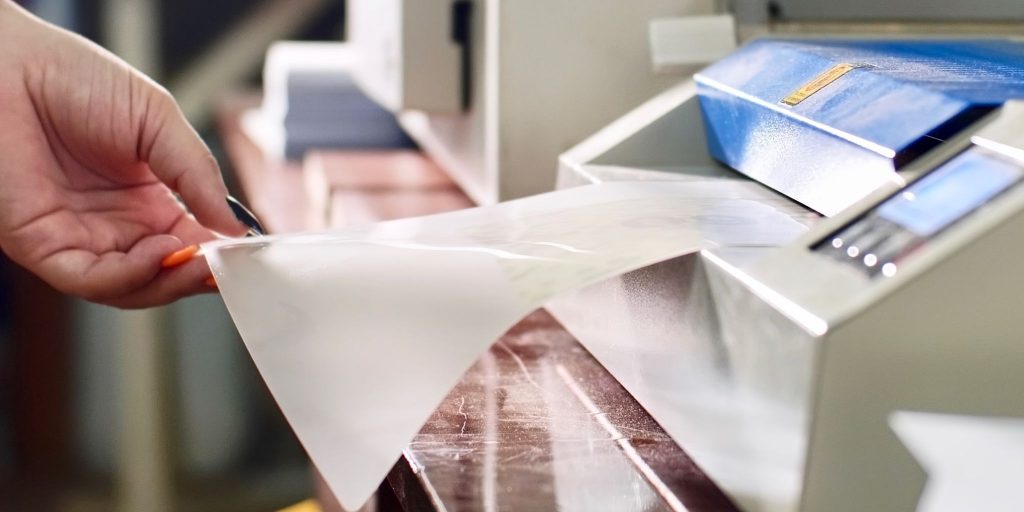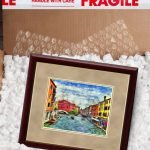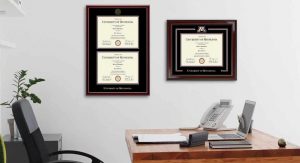
How many old, historic documents do you have in your home? Whether it’s birth certificates of past family members, important papers recording the history of your family, or valuable documents that have been passed down through the generations, it’s important to know how to store paper documents long-term.
One of paper’s biggest enemies is acid. It makes paper weak and brittle and can lead to discoloration, deterioration, and irreversible damage. Other factors that affect the life of paper materials include the manufacturing process, paper components, and inks that are applied to the paper.
t’s important to create a safe environment for your paper documents to keep these elements from destroying them. To protect and preserve your family and historic documents, there are steps you can take to ensure their safety and longevity, including safeguarding those valuable papers in archival-quality custom frames.
Read on to learn more about the importance of document preservation and our best tips for how to preserve old documents in your own home.
How to Preserve Old Documents
Not many families know how to preserve newspaper clippings or how to store paper items correctly. When it comes to preserving memories and treasured keepsakes, not knowing how to properly archive paper documents can be detrimental. Imagine water damage destroying family archives; mold on your great-grandfather’s United States immigration card; or Civil War letters that are part of American history? Preserve family documents for future generations by discovering how to store archival documents properly.

1.) Wash and dry your hands
When it comes to how to preserve paper, dirt and oil are the enemies. Make sure your hands are clean and dry before handling a historic document. Oils in your skin can leave stains or weaken the paper, thus permanently damaging the document. For valuable old papers or when archiving photos, be sure to wear gloves. This is the golden rule when it comes to how to protect paper documents, regardless of their age or current condition.
2.) Don’t use fasteners or adhesives
Never use paper clips, staples, rubber bands, tape, or glue when storing papers or photo archiving. These basic office supplies can stain, tear, and ruin paper materials. Also, avoid using pressure-sensitive tapes to repair tears. Tapes, especially those that aren’t acid-free, can cause irreversible damage, such as stains, ink alteration, or brittle paper. While it can be tempting to use these tools when preserving old documents, it’s best to avoid them altogether in the storage of paper.

3.) Avoid lamination
Above all, never laminate an important document. The process is irreversible and can decrease the value of the document. Many companies will offer lamination as a means for document preservation of diplomas and degrees, which will destroy your credentials in record time. You should only trust museum-quality certificate frames to preserve the integrity of your valuable family keepsakes.
Some believe that lamination is a means for how to preserve old photos as well. Just take a look at old family scrapbooks and photo albums to see the damage laminated pages have cause. These fragile paper documents will yellow, mold, and rip when in contact with cheap plastic sheets over time. If you’re not sure how to preserve old newspapers, read on for best practices.
4.) Carefully monitor light exposure
It’s also important to understand how light can affect document preservation. Ideally, documents should have limited exposure to light. However, if you have a valuable piece that you’d like to frame and display in a particular room, then you should opt for UV-filtering glass over the document and place UV filters on the windows and light bulbs in that room. Hang the frame in a spot that’s out of direct sunlight. This small step will help to preserve documents in pristine condition for decades to come while still allowing them to be displayed for all to see.

Properly store your documents
Always store important documents flat in a cool, dry, and dark area. Papers should always be stored in acid-free, alkaline materials (like boxes, folders, or mats) or in polyester file folders in filing cabinets. Never keep your documents in a damp or humid storage space, such as basements, attics, or bathrooms. These storage locations can lead to mold growth and foxing (brown stains on the surface of the paper).
The Library of Congress states that the ideal temperature for storage facilities is below 72 degrees Fahrenheit with a relative humidity of 35%. If you are displaying your old documents in frames, it’s important to choose a room that has a fairly consistent temperature throughout the year to avoid condensation or any other damage.
The best way to store documents
The best way to store paper documents and put them on display is with a high-quality frame. Church Hill Classics frames feature UV-filtered glass and premium archive paper mats. The custom frames are the best storage systems for priceless paper archive collections, such as parchment copies of the Declaration of Independence. When it comes to preserving paper archive documents for years to come, start with a custom USA-made frame from Church Hill Classics.









